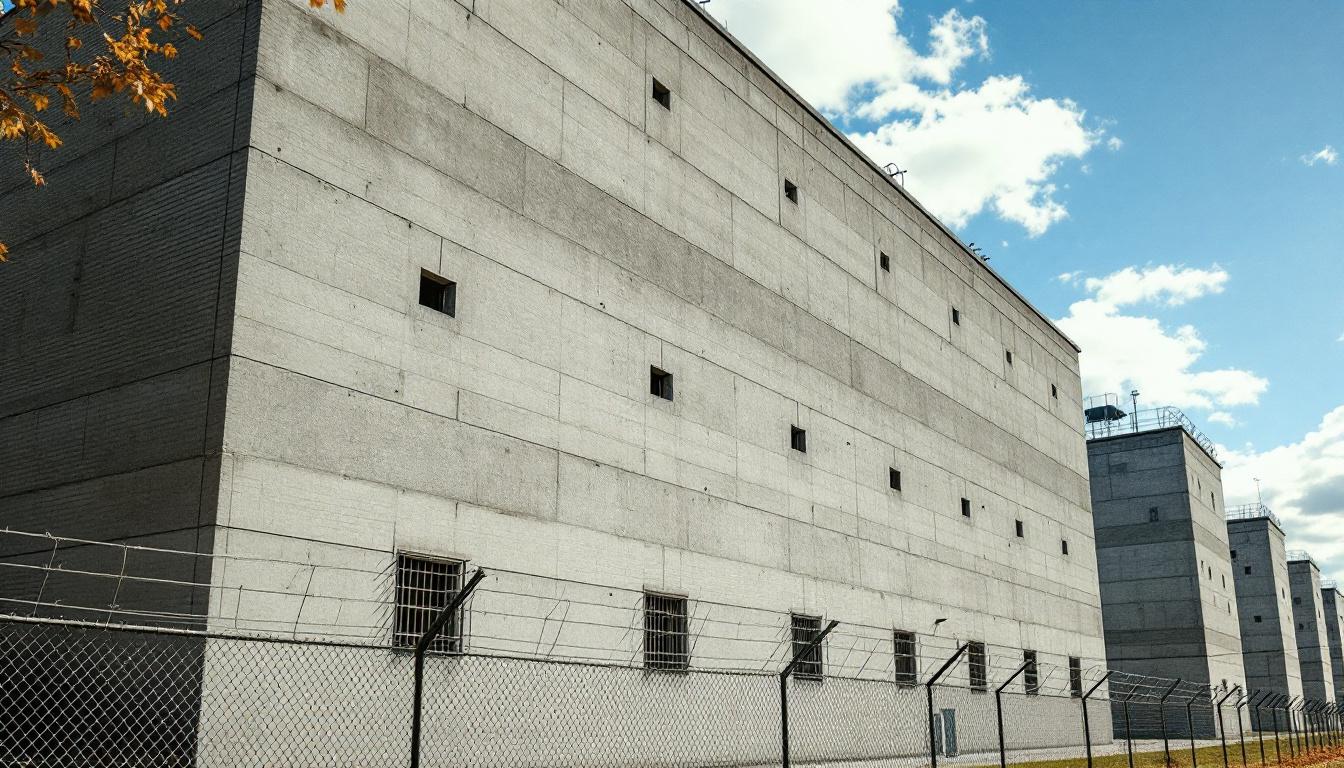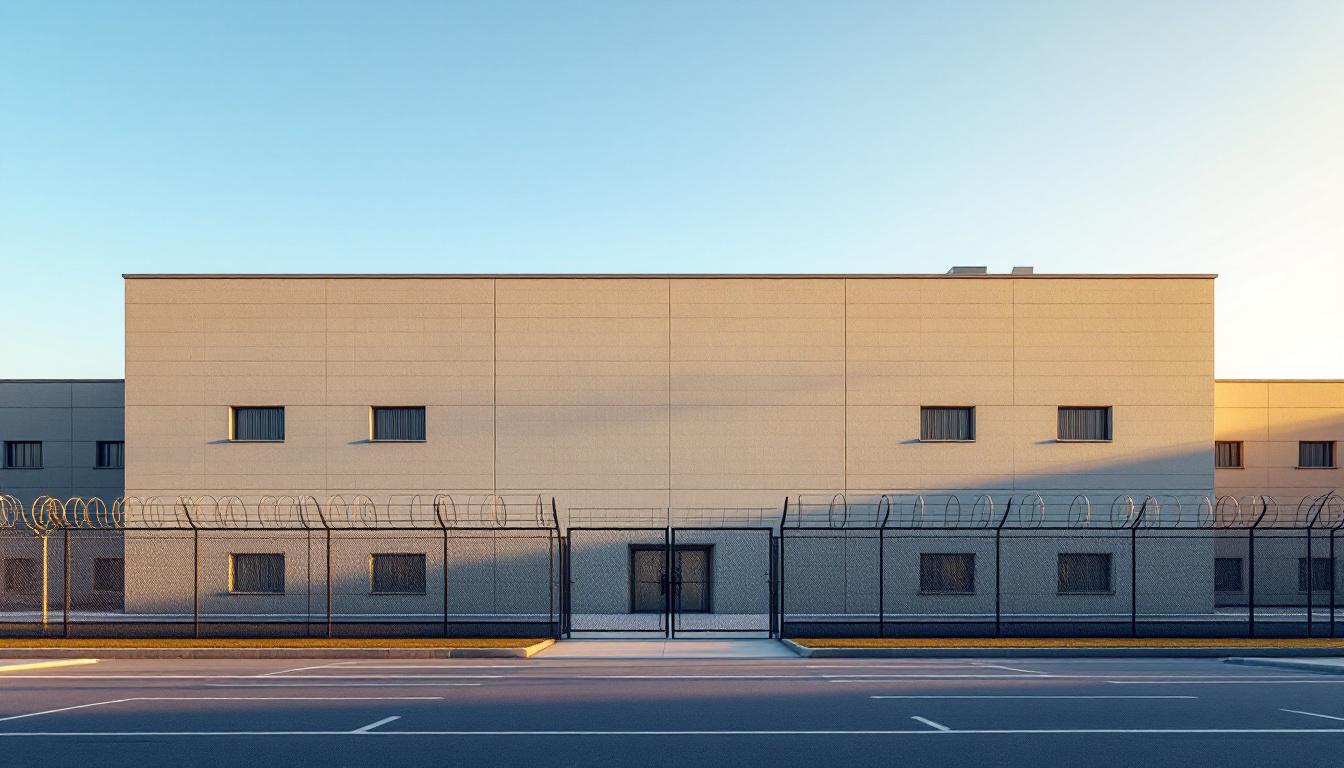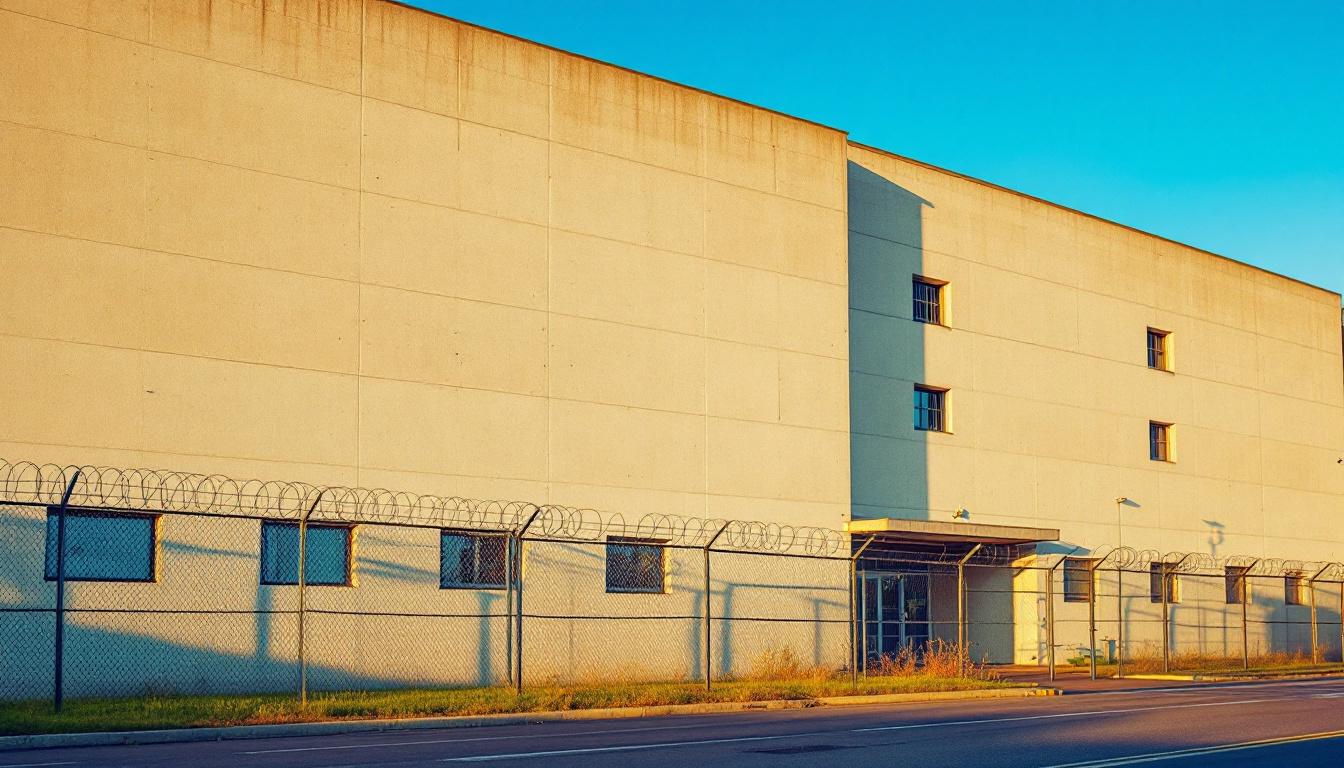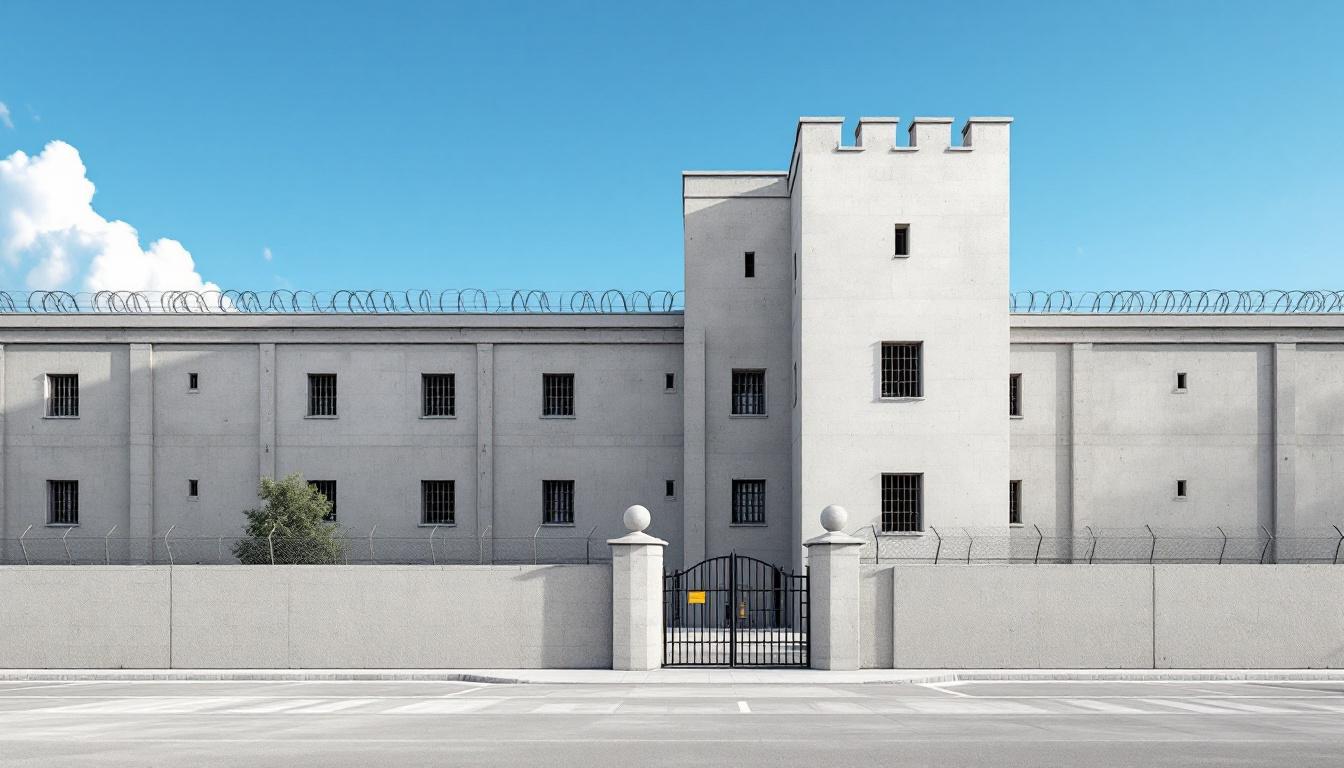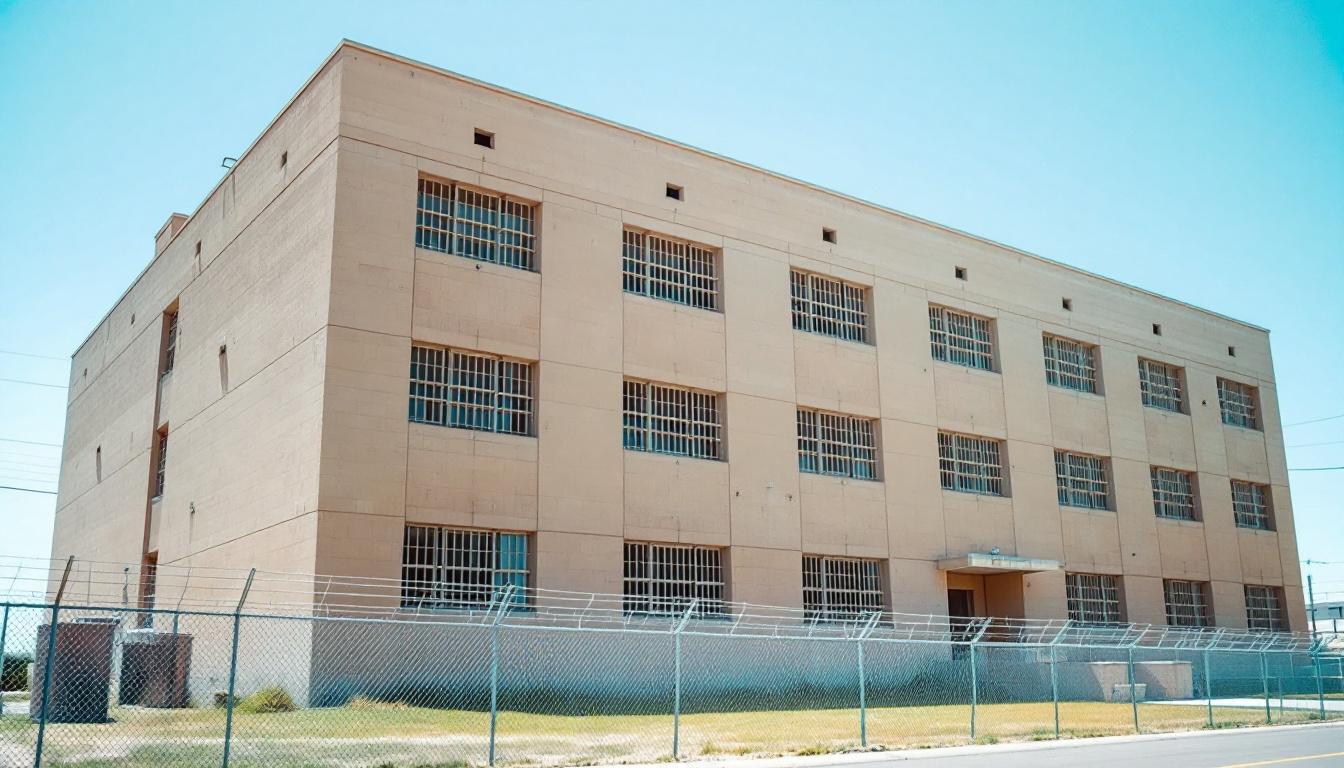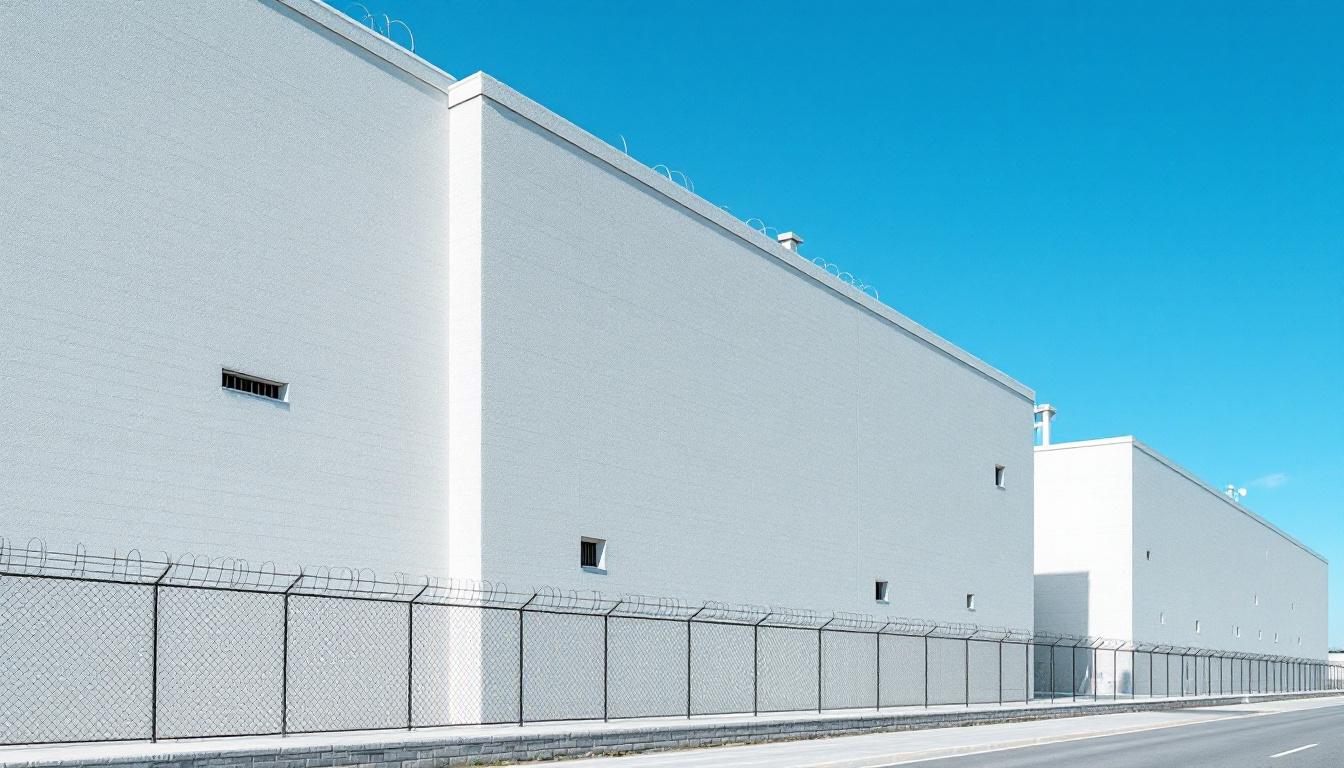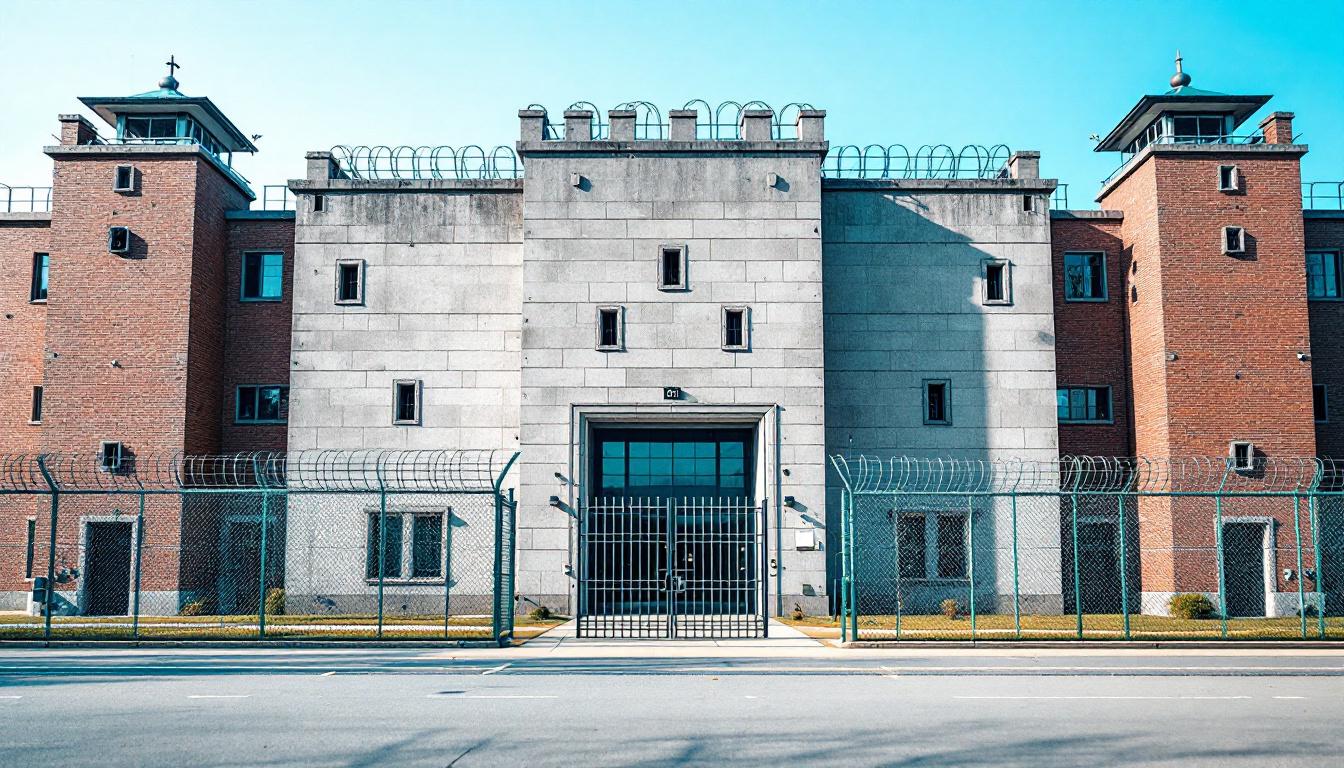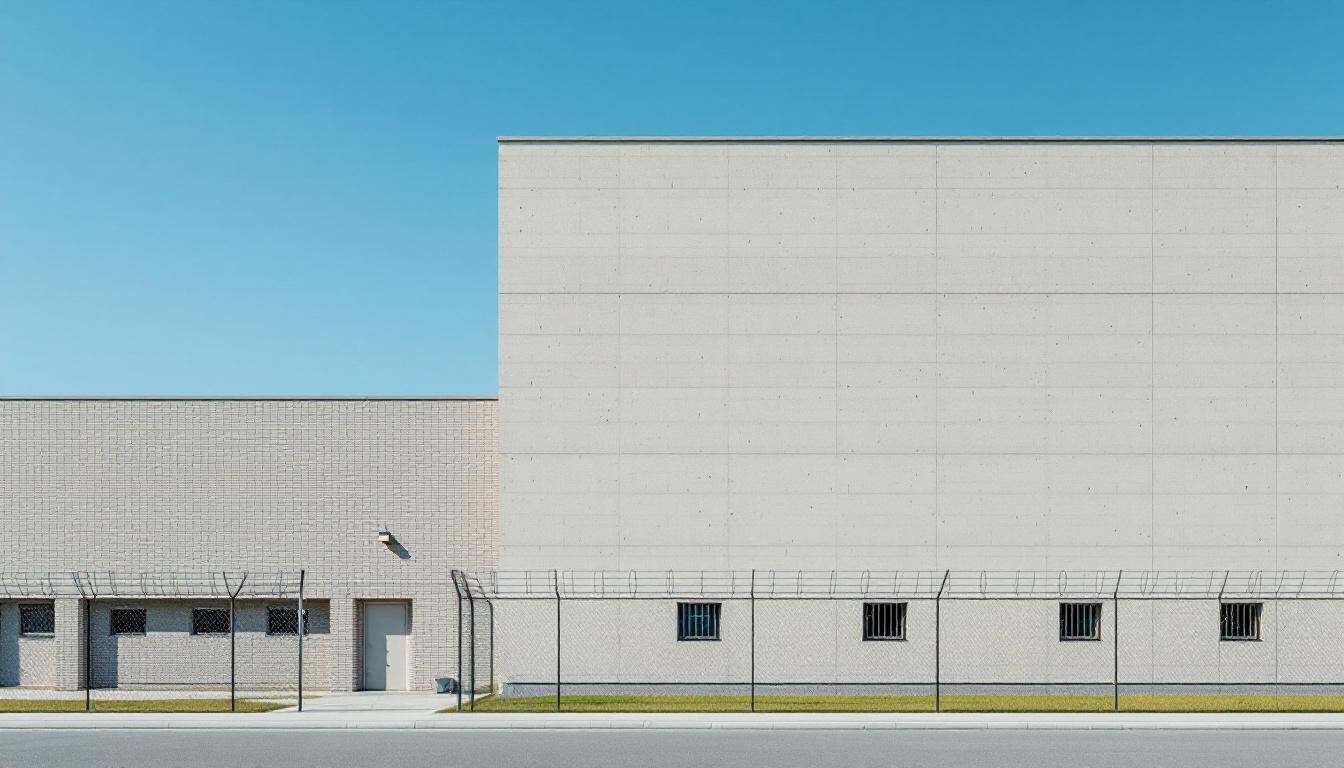
Quick Navigation
How to contact an inmate at Moshannon Valley Processing Center
This comprehensive guide will walk you through how to connect with an inmate at Moshannon Valley Processing Center. Follow the steps below to find an inmate and send letters and photos:
- Search for the inmate using our search tool below
- Create your account or log in to Penmate
- Write your message (up to 6,000 characters)
- Send instantly - inmates receive printed copies daily
Find an Inmate
Search for an inmate to start communicating today
Tip: You can search by first name, last name, or inmate ID number
To contact a person at Moshannon Valley Processing Center start by searching for the person on the official facility website. Perform a search by following these steps:
- Step 1: Enter their first name and last name into the search form and click "Search"
- Step 2: Locate their inmate record
- Step 3: Write down their Inmate ID and any housing information provided
Important! Be sure to enter the person's full name. Nicknames should not be used.
How to Send Messages to Inmates

You can use your phone or computer to send emails, letters, and photos to an inmate. Messages are sent electronically to inmate tablets or kiosks at the facility. If you would like to send a message, start by searching for an inmate at Moshannon Valley Processing Center.
Sending Photos and Postcards

A great way to send love and support to a loved one at Moshannon Valley Processing Center is to send photos and postcards. It only takes a few minutes to send photos from your phone and it makes a huge difference. You can also mail postcards with words of support and inspiration, or design your own postcard for special moments like birthdays and holidays.
Important! Be sure not to send any explicit photos or they may not be approved by the facility. You can also use a photo printing app like Penmate to make sure your photos are printed at the correct size (4x6 or 3x5) and are mailed according to the rules and regulations of Moshannon Valley Processing Center.
Frequently asked questions about Moshannon Valley Processing Center
-
How long does it take to deliver a message?
If you're sending an email message your letter is usually delivered within 24-48 hours. For messages sent via mail you should expect delivery within 3-7 days. All messages will need be approved by Moshannon Valley Processing Center.
-
How much does it cost to send a message to Moshannon Valley Processing Center?
You can send a message free using your phone or mail a message via USPS for the price of a $0.60 stamp and envelope. You can also purchase credits or e-stamps from services starting at $1.99.
-
What services can I use to contact an inmate at Moshannon Valley Processing Center?
Penmate
You can use Penmate to send letters and photos to an inmate from your phone. It's an easy way to stay in touch during your loved one's incarceration. Use the inmate locator to find an inmate's location and contact information, then you can send messages within a few minutes.
Securus messaging
Securus may be another option for communicating with an inmate at Moshannon Valley Processing Center. You can create a friends and family account and purchase credits to send messages. All messages will be reviewed and must be approved by the facility.
JPay
Some county jails and state prisons may support sending messages with JPay. You must register an account with the system, find your loved one, and purchase stamps to send messages. For some locations you can also attach photos.
Smart Jail Mail
You may also check if Smart Jail Mail is available at Moshannon Valley Processing Center. Smart Jail Mail is operated by Smart Communications and has contracted with some state and county jails. After purchasing credits, your messages and photos are sent to the facility, printed out, and then handed out to your loved one.
-
What is the mailing address of Moshannon Valley Processing Center?
Mailing address:
Moshannon Valley Processing Center
555 GEO Drive
Philipsburg, PA 16866
Phone: (814) 768-1200Business hours:
- Monday: 8:00 AM – 9:00 PM
- Tuesday: 8:00 AM – 9:00 PM
- Wednesday: 8:00 AM – 9:00 PM
- Thursday: 8:00 AM – 9:00 PM
- Friday: 8:00 AM – 9:00 PM
- Saturday: 8:00 AM – 9:00 PM
- Sunday: 8:00 AM – 9:00 PM
-
What are the visiting hours at Moshannon Valley Processing Center?
Visiting hours at Moshannon Valley Processing Center vary by housing unit and security level. Generally, visits are scheduled on weekends and holidays, with some facilities offering weekday visits. Contact the facility directly at (814) 768-1200 or check their website for the current visiting schedule. Visits typically last 30-60 minutes and must be scheduled in advance.
-
What items are prohibited when sending mail to Moshannon Valley Processing Center?
Prohibited items typically include: cash, personal checks, stamps, stickers, glitter, glue, tape, staples, paperclips, polaroid photos, musical or blank greeting cards, hardcover books, magazines with staples, and any items containing metal or electronics. Only send letters on plain white paper with blue or black ink. Photos must be printed on regular photo paper (no Polaroids). Always check with Moshannon Valley Processing Center for their specific mail policies.
-
How do I send money to an inmate at Moshannon Valley Processing Center?
You can send money to an inmate at Moshannon Valley Processing Center through several methods: 1) Online using JPay, Access Corrections, or the facility's approved vendor, 2) Money orders mailed directly to the facility with the inmate's name and ID number, 3) Kiosks located in the facility lobby, or 4) Over the phone using a credit or debit card. Fees vary by method, typically ranging from $2.95 to $11.95 per transaction.
-
Can I schedule a video visit with an inmate at Moshannon Valley Processing Center?
Many facilities now offer video visitation as an alternative to in-person visits. At Moshannon Valley Processing Center, video visits may be available through services like Penmate, Securus Video Connect, GTL, or ICSolutions. Video visits typically cost $10-20 for 20-30 minutes and must be scheduled in advance. You'll need a computer or smartphone with a camera and reliable internet connection. Contact the facility for their specific video visitation policies and approved vendors.
-
What identification do I need to visit an inmate at Moshannon Valley Processing Center?
All visitors must present valid government-issued photo identification such as a driver's license, state ID, passport, or military ID. Minors must be accompanied by a parent or legal guardian who can provide the minor's birth certificate. Some facilities require visitors to be on the inmate's approved visitation list, which may require a background check. Contact Moshannon Valley Processing Center for specific ID requirements and visitor approval procedures.
-
How can I find out an inmate's release date?
To find an inmate's release date at Moshannon Valley Processing Center, you can: 1) Use the online inmate search tool if available, 2) Call the facility's records department, 3) Contact the inmate's case manager or counselor, or 4) Have the inmate provide this information during a call or visit. For privacy reasons, some facilities only release this information to immediate family members.
Facility Overview
Contact Information
Moshannon Valley Processing Center555 GEO Drive
Philipsburg, PA 16866
Phone: (814) 768-1200
Official Website

About Moshannon Valley Processing Center
Correctional facilities serve as integral components of state justice systems, providing structured environments where individuals work toward rehabilitation while serving their sentences. Within this framework, Moshannon Valley C.I., PA operates as a VA correctional facility that contributes to the broader mission of public safety and offender reintegration throughout the region.
Situated in Philipsburg, VA, this facility typically serves the population services needs of individuals from surrounding communities while maintaining connections that support family relationships during incarceration. The geographic positioning in Philipsburg allows for accessibility that may facilitate visitation and community ties, which research generally indicates as beneficial factors in successful reintegration outcomes. As part of Virginia’s correctional network, the facility often works to balance security requirements with programming opportunities that address various aspects of rehabilitation.
The facility’s approach to correctional services generally aligns with state-level goals of reducing recidivism through structured programming and preparation for eventual community reentry. Programs may include educational opportunities, vocational training, and therapeutic services designed to address underlying factors that contribute to criminal behavior. Through these comprehensive services, Moshannon Valley C.I., PA typically works to support both immediate correctional needs and longer-term community safety objectives, recognizing that effective rehabilitation benefits not dedicated those incarcerated but also their families and the broader Philipsburg area.
Programs & Services
Through comprehensive programming initiatives, support is delivered to the population at Moshannon Valley C.I. via structured interventions designed to address both immediate needs and long-term reintegration goals. The facility’s approach emphasizes personal development through evidence-based methodologies, recognizing that meaningful change occurs when individuals are provided with appropriate resources and guidance. These programs typically operate within a framework that prioritizes skill acquisition, behavioral modification, and community preparation, creating pathways for successful transition upon release.
Educational and vocational programs form the cornerstone of skill development opportunities available to participants. Education programs may supply foundational academic instruction alongside specialized tutoring programs that address individual learning needs and deficiencies. Furthermore, vocational training initiatives often include hands-on instruction in trades such as welding, providing the population with marketable skills that enhance employment prospects. These programs typically emphasize both theoretical knowledge and practical application, ensuring participants develop competencies that align with current industry standards and community workforce demands.
Therapeutic and spiritual support services complement the educational framework through targeted interventions addressing behavioral and emotional needs. Cognitive behavioral programs may offer structured approaches to addressing thinking patterns and decision-making processes that contribute to criminal behavior. Furthermore, religious services typically provide spiritual guidance and community connection opportunities, supporting those who seek faith-based perspectives during their incarceration. These support mechanisms often include group sessions, individual counseling opportunities, and structured activities designed to promote personal reflection and positive behavioral change, ultimately preparing participants for successful family and community reintegration.
Daily Life & Visitation
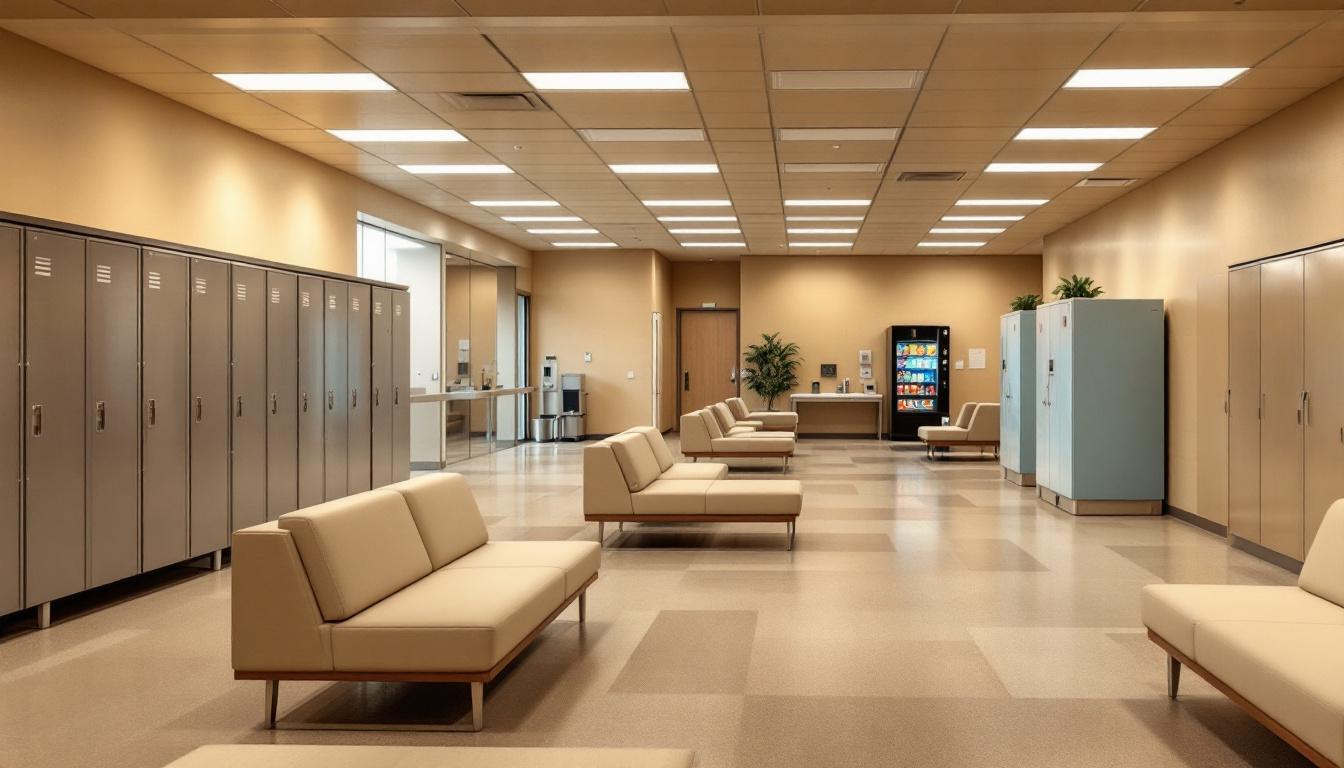
The carefully orchestrated framework of institutional protocols shapes every aspect of residential experience, where systematic scheduling and clear hierarchical oversight create predictable patterns that govern the population’s daily existence. At present, the facility actively maintains structured routines that typically begin with early morning accountability procedures, followed by organized meal service, work assignments, and educational programming that supply essential structure throughout each day. Generally, the population moves through designated areas according to established timeframes, with staff supervision ensuring orderly transitions between housing units, dining facilities, recreational spaces, and program locations.
Furthermore, living accommodations typically consist of multi-occupancy housing units where the population resides in dormitory-style or cell-based arrangements, depending on security classification and available space. The facility usually provides basic furnishings and allows residents to maintain limited personal property within established guidelines, while commissary services may offer additional items for purchase. Although space constraints often influence housing assignments, efforts are generally made to accommodate individual needs when possible, and the population typically has access to common areas within their designated housing sections for socialization and leisure activities during approved periods.
The facility’s programming structure typically supplies various opportunities for personal development, including educational classes, vocational training, and recreational activities that may include gymnasium access, outdoor exercise periods, and organized sports when weather and security conditions permit. Communication with family members and loved ones generally occurs through scheduled visitation sessions, telephone privileges, and correspondence, although specific policies regarding frequency and duration may vary based on security level and individual circumstances. Work assignments within the facility often include food service, maintenance, laundry operations, and administrative support roles that provide the population with opportunities to develop job skills while contributing to institutional operations, creating a comprehensive daily structure that balances security requirements with rehabilitative programming goals.
Ready to Connect?
Start communicating with your loved one today
Search for an Inmate
